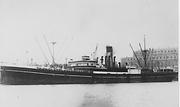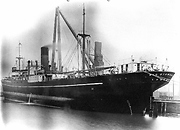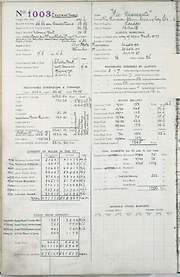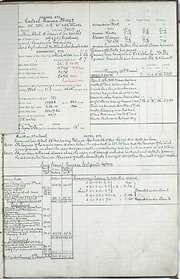 Hartlepool Sports & Leisure
Hartlepool Sports & Leisure
- Cinemas, Theatres & Dance Halls
- Musicians & Bands
- At the Seaside
- Parks & Gardens
- Caravans & Camping
- Sport
 Hartlepool Transport
Hartlepool Transport
- Airfields & Aircraft
- Railways
- Buses & Commercial Vehicles
- Cars & Motorbikes
- The Ferry
- Horse drawn vehicles
 A Potted History Of Hartlepool
A Potted History Of Hartlepool
- Unidentified images
- Sources of information
- Archaeology & Ancient History
- Local Government
- Printed Notices & Papers
- Aerial Photographs
- Events, Visitors & VIPs
 Hartlepool Trade & Industry
Hartlepool Trade & Industry
- Trade Fairs
- Local businesses
- Iron & Steel
- Shops & Shopping
- Fishing industry
- Farming & Rural Landscape
- Pubs, Clubs & Hotels
 Hartlepool Health & Education
Hartlepool Health & Education
- Schools & Colleges
- Hospitals & Workhouses
- Public Health & Utilities
- Ambulance Service
- Police Services
- Fire Services
 Hartlepool People
Hartlepool People
 Hartlepool Places
Hartlepool Places
 Hartlepool at War
Hartlepool at War
 Hartlepool Ships & Shipping
Hartlepool Ships & Shipping

Rio Diamante

Names and owners
Year |
Name |
Owner |
|
|---|---|---|---|
| 1928 | Rio Diamante | Thompson S.S. Co. London | |
| 1933 | Chloe | N.D. Lykiardopulo |
Fate
On a voyage from Newcastle, NSW for Noumea with a general cargo Chloe was torpedoed 35 miles from Noumes & sunk by gunfire by Japanese submarine 1-21 on 7 May 1942.
Related items :
 Rio Diamante - Launch
Rio Diamante - Launch
THE RIO DIAMANTE. LAUNCH AT GRAY’S CENTRAL SHIPYARD
Northern Daily Mail. 22/3/28
This afternoon,, Messrs. William. Gray and Co., Ltd., launched from their Central Shipyard. West Hartlepool. the handsome steel screw steamer Rio Diamante, which is being built to the order of the Thompson Steam Shipping Co., Ltd., London.
The vessel will take the highest class in Lloyd’s Register of Shipping, and is of the following dimensions: Length (B. P.) 400ft., breadth (moulded) 53ft., depth (moulded to upper deck) 28ft. 1 ½ in., with open shelter deck having a tonnage opening in the after end.
The ship is constructed to the design of the Monitor Shipping Corporation, Ltd., Newcastle-on-Tyne, with 17in. web framing, double bottom on cellular system, and fore and after peak tanks. She has six watertight bulkheads, together with steel centre line bulkheads in the holds and wood shifting boards for the special carriage of grain cargoes.
Spacious accommodation for the captain and officers is arranged in steel houses amidships, the engineers being berthed in large houses adjacent to the casing, and the crew aft.
For the quick handling of cargo, 11 powerful steam winches are to be provided to work ten derricks. A direct-acting steam windlass forward and steam steering gear amidships are also fitted. The topmasts are to be telescopic, lowering to a height suitable for the Manchester Canal Bridges.
The vessel will be completed in all respects as a first-class cargo steamer, her equipment including a refrigerating plant, an efficient wireless installation and electric light throughout.
The Machinery.
The machinery will be supplied by the Central Marine Engineering Works of the builders, and consists of reciprocating engines of the balanced quadruple expansion, inverted, direct-acting, surface condensing type.
There will be three boilers, each working at the pressure of 260Ils. Per square inch and fitted with forced draught. The steam will be superheated to about 560 deg. F. Special air heaters are fitted, by means of which the air supply to the furnaces is pre-heated to about 300 deg. F.
A number of auxiliaries of the “C.M.E.W.” type made by the Central Marine Engineering Works, will be fitted, including centrifugal pump, direct contact heater, High pressure live steam surface feed heater, gravitation feed filter, pair of independent feed pumps, drain and scum tank, harbour feed pump, general service and ballast pumps, and evaporator. The plant is expected to yield exceptionally economical results. The ship and machinery are being built under the supervision of Mr. Geo. Humphreys, on behalf of the owners.
The ceremony of naming the steamer Rio Diamante was gracefully performed by the Right. Hon. The Countess of Wemyss.
Journal and North Star 23/3/28
The countess of Wemyss visited West Hartlepool yesterday to perform the ceremony of naming the Rio Diamante, on the occasion of the launch of the vessel from Messrs. W. Gray and Co.’s Central Shipyard. The vessel has been built to the order of the Thompson Steam Shipping Co., Ltd., London, is 400ft. In length and has been constructed to the design of the Monitor Shipping Corporation, Ltd., Newcastle, with 17in. web framing, double bottom on the cellular system, and fore and after peak tanks. The machinery will be supplied by the Central Marine Engineering Works of the builders, and a number of auxiliaries of the “C.M.E.W.” type made by the Central Marine Engineering Works, will be fitted. The ship and machinery are being built under the supervision of Mr. Geo. Humphreys, on behalf of the owners.
Amongst those present at the launch were Mr. M. Huntley and Mr. F. T. Fisher (director), and Mr. S. A. Cook (secretary), representing the owners; Sir William Gray (chairman), Mr. F. C. Pyman (director), Mr. M. S. Gibb, Mr. A. McGlashan, and Mr. J. H. Farmer (directors); Mr. T. S. Simpson (general manager), and Mr. W. Wilson (yard manager) representing the builders; Mr. A. H. Partridge, Mr. R. W. E. Dixon, Mr and Mrs. T. G. Smith, Mr. M. H. Lawson, Miss W. M. Claris, Mr. D. Huntley, Miss Spanton, Mrs. F. C. Pyman, Mrs. J. H. Farmer, Mrs. M. S. Gibb, Mr. And Mrs. D. A. Haggie, Mr. Leslie Runciman, Mr. And Mrs. J. P. C. Thompson, Mr. J. Tutin, M.Sc., Mr and Mrs. G. Humphries, Mr and Mrs, S. T. Coulson, Mr. And Miss. Haver, Dr. and Mrs. Telfer, Mr. And Mrs. T. H. Patterson, Mr. and Mrs. A. Thompson, Mr. Austin Burdon, Mrs. Waddy, Miss Waddy, Mrs. James White, Mr. C. E. Smith. Capt. And Mrs Jackson, Mr. And Mrs, J. H. Dunn, Mr. And Mrs. C. P. Sanderson, Mr. And Mrs. W. Dodds, Mr. H. V. Johnson; also Mr. S. Pickworth, Mr. A. Dainsith, and Mr. L. Storey (Lloyd’s Register).
SIR W. GRAY’S WELCOME
Following the launch of the Rio Diamante a large company assembled at the dockyard, where they were welcomed by Sir W. Gray, who remarked that the Rio Diamante was the first vessel of monitor design which they had built, and that she was to be fitted with quadruple machinery, said it was gratifying to see in these days, when the relative claims of oil and coal were being so widely discussed, that British shipowners were still adopting the latest developments in steam machinery burning coal under boilers.
Alluding to the lean times through which the shipbuilding industry is passing, Sir W. Gray said the men engaged in that industry, skilled and un-skilled alike, had shown patience and common sense. Referring to the proposed index upon which fluctuations of wages could be based without recourse to bargaining and strife, he expressed the opinion that if this were adopted it would create an atmosphere of confidence and within the industry more harmonious working, and would assist British shipbuilding to recover its pre-war eminence.
Sir William presented the Countess Wemyss with a handsome gold purse, and the Countess, expressing thanks, spoke of the romance and mystery of ships through the ages, and wished the Rio Diamante every success. Mr. M. Huntley, director of the Thompson Steam Shipping Co., remarking they were sometimes laughed at for building vessels of the monitor type, which had been describes as ships with sausages on their sides, said they were well paid for being laughed at, for since 1921 their fleet of four such ships had carried over £25,000 extra freight earnings, and had burnt 10,00 tons less bunkers.
Mr. G. Humphries, of the Monitor Shipping Corporation, also testified to the economy of the monitor type, and said the Rio Diamante was the 30th vessel of that type launched.
SAVING IN COAL CONSUMPTION
Mr. Maurice S. Gibb said the Rio Diamante would be a remarkable vessel in many ways. If their anticipations and calculations were justified, then they would see a saving of about 25 per cent. in coal consumption as compared with ordinary 10 knot cargo boat fitted with triple expansion engines.
They had in the Rio Diamante the combination of a peculiar shape of hull(which the inventors claimed required comparatively little energy to push it through the water), and the most economical type of steam propelling machinery for this type of boat, in the shape of high pressure quadruple expansion engines supplied with steam at 260 lb per square inch from boilers of the ordinary cylindrical type.
“I am afraid,” said Mr Gibb, “we are getting into a bad habit of calling 260 lb. a high pressure. As a matter of fact, we have built 11 ships with steam pressure over 250 lb. per square inch. There are many boilers operating to-day between 400lb. and 500lb. pressure, and some even as high as 1,200lb. pressure, so that 260lb. in the light of recent developments should really be called a low pressure. At any rate it is a safe pressure, and one which will not cause an increase in the cost of boiler repairs.”
He paid a tribute to the Thompson Steam Shipping Company for their enterprise and far-seeing business acumen in selecting this type of machinery to use our British product, coal, and remarked that the importance of this step should be readily appreciated by those who live on the borders of the Durham coal fields, where there were so many miners out of work.
COAL EXPORTS
We must by some means or other restore the high levels of our coal exports. This could be done by further reductions in the price of coal and by producing steam-propelling machinery to use coal more economically than hitherto, so that the cost of running steamers would be brought well below that of operating motor ships, having regard to the capital, maintenance, and running costs.
“A good deal has been said,” remarked Mr. Gibb, “with regard to the carbonization of coal and about pulverised coal, and there are many who think that these methods of dealing with coal will be the salvation of the coal industry. A large amount of work is being done in connexion with the processes, but they are very much in the experimental stages, and a great deal will have to be done before we can be looked upon as being suitable for seagoing conditions.
More detail »
 Rio Diamante - Trial
Rio Diamante - Trial
A “BLISTER” SHIP. TRIAL TRIP OF REMARKABLE VESSEL
Northern Daily Mail. 7/5/28
The s.s. Rio Diamante, built by Messrs. William. Gray and Co., Ltd., to the order of the Thompson Steam Shipping Co., Ltd., London, successfully ran her official sea trial on Saturday. She is a remarkable vessel in many respects, and has aroused the curiosity of all who have seen her during the time she has been in dock fitting out.
The hull is what is known as the “monitor” type, the model of which is designed to take considerably less power to drive through the water than the ordinary straight sided ship. The combination of the “monitor” sides and the high pressure quadruple expansion machinery with which she is fitted, is expected to give the most economical results, and may open up a new era in the cost of sea transport.
The results obtained on the trial were very satisfactory, and augurs well for the results obtained from the loaded vessel. A speed of 13 knots was obtained, and the absence of vibration at all speeds up to the maximum was most noticeable, the ship and machinery running with the greatest smoothness.
CONSTRUCTION
The vessel is built to the highest class in Lloyd’s Register of Shipping, and is of the following dimensions: Length (B. P.) 400ft., breadth (moulded) 53ft., depth moulded to upper deck 28ft. 1 ½ in., with open shelter deck having a tonnage opening in the after end.
The vessel is constructed to the design of the Monitor Shipping Corporation, Ltd., Newcastle-on-Tyne, with 17in. web framing, double bottom on cellular system, and fore and after peak tanks. She has six watertight bulkheads, together with steel centre line bulkheads in the holds and wood shifting boards for the special carriage of grain cargoes.
For the quick handling of cargo, 11 powerful steam winches are to be provided to work 10 derricks. A direct-acting steam windlass forward and steam steering gear amidships are also fitted. The topmasts are to be telescopic, lowering to a height suitable for the Manchester Canal Bridges. The equipment includes refrigerating plant, wireless installation and electric light.
The Machinery.
The machinery supplied by the Central Marine Engineering Works of the builders, consists of reciprocating engines of the balanced quadruple expansion, inverted, direct-acting, surface condensing type.
There are three boilers, each working at the pressure of 260lbs. Per square inch and fitted with forced draught. The steam will be superheated to about 560 deg. Fahr. Special air heaters are fitted, by means of which the air supply to the furnaces is pre-heated to about 350 deg. Fahr.
A number of auxiliaries of the “C.M.E.W.” type also made by the Central Marine Engineering Works, are fitted, including centrifugal pump, direct contact heater, High pressure live steam surface feed heater, gravitation feed filter, pair of independent feed pumps, drain and scum tank, harbour feed pump, general service and ballast pumps, and evaporator.
The owners were represented on the trial by Mr. G. Humphreys, under whose supervision the ship and machinery have been built, others present including Mr. A. Thompson, Dr. Telfer, and Mr. J. Tutin, M.Sc.
Northern Echo 7/5/28
The monitor ship Rio Diamante, which has been constructed by William Gray and Co., of West Hartlepool, successfully completed her official sea trials on Saturday. The vessel is one of comparatively few monitor ships constructed in this country, their peculiarity being a series of corrugations which run from end to end of the ship. Their purpose is to minimise rolling, provide more cargo space, and obtain the maximum thrust from the screw. In the trials of the Rio Diamante the absence of roll was most noticeable, and the vibrations from the engines were also distinctly minimised.
Messrs. William Gray and Co., Ltd., have launched from their Central Shipyard, West Hartlepool, the s.s. Carperby, another fine addition to the Ropner Shipping Co., Ltd., of West Hartlepool. She is 418ftft. in length, 53ft 6in. broad, and 29ft. 6in. in depth. Triple expansion engines will be supplied by the Central Marine Engineering Works of the builders.
The christening ceremony was performed by Miss Clare A. MacGregor, daughter of Dr A. V. MacGregor, of West Hartlepool.
 Chloe
Chloe
 Donated by J. Hillier
Donated by J. HillierThe steamship Chloe, originally built as the Rio Diamante.
More detail »









